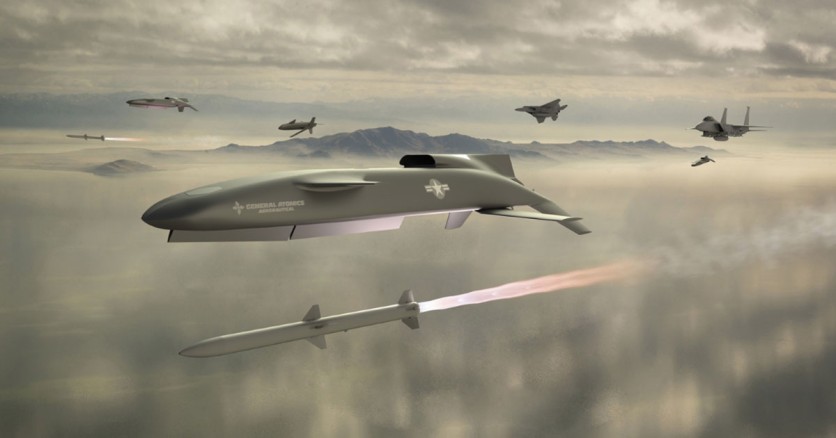The US Defense Advanced Research Projects Agency (DARPA) and General Atomics Aeronautical Systems, Inc. are poised to begin the flight-testing phase of their "LongShot" missile-firing drone.
The joint venture, which began in 2020, saw General Atomics securing a competitive contract to bring DARPA's vision of an air-to-air capable vehicle to life. The collaboration aims to revolutionize combat aircraft.

The LongShot Missile-Firing Drone of DARPA and General Atomics
According to News Atlas, the aircraft combines air-to-air missiles with a jet-powered drone that fighters and bombers can launch and control.
Over the past three years, General Atomics has undergone a series of design iterations to fine-tune the aircraft's performance, culminating in the forthcoming flight testing slated for 2024.
This phase is pivotal in confirming fundamental vehicle handling characteristics, laying the groundwork for subsequent development and evaluation.
Mike Atwood, Vice President of Advanced Aircraft Programs at GA-ASI, voiced their anticipation, saying, "We are extremely excited to get in the air! Flight testing will validate digital designs that have been refined throughout the course of the project. General Atomics is dedicated to leveraging this process to rapidly deliver innovative unmanned capabilities for national defense."
The central aim of the LongShot program is to disrupt the established norms of air combat operations. That entails demonstrating an unmanned air-launched vehicle capable of employing current air-to-air weapons, vastly extending engagement range, and bolstering mission effectiveness.
The program encompasses the design, fabrication, and flight testing of a demonstration system to substantiate the feasibility of the LongShot concept.
NASA and DARPA Team Up for Nuclear-Powered Rockets
In a related development, NASA and DARPA are embarking on an ambitious project focused on nuclear-powered rockets, representing a substantial leap in space mission capabilities. NASA is injecting a formidable $300 million into this endeavor, targeting a maiden nuclear propulsion rocket launch by 2027.
This project seeks to address the inefficiencies of conventional combustion-based rockets, notorious for their high fuel consumption, a significant impediment to deep-space travel.
Lockheed Martin has been entrusted with spearheading the project and tasked with designing, constructing, and testing the nuclear-powered rocket under the Demonstration Rocket for Agile Cislunar Operations (DRACO) program.
It marks a significant stride toward unlocking the potential of nuclear propulsion in the domain of space exploration. This venture is a testament to the ever-evolving landscape of aerospace technology, where partnerships between government agencies and private entities push the boundaries of what was once thought impossible.
As both the LongShot program and the nuclear propulsion rocket project advance, they hold the promise to reshape the future of air combat operations and space exploration, respectively.
Related Article : DARPA Successfully Flew a Black Hawk Helicopter using 'ALIAS' without Any Pilot-Self-Flying Missions Soon?

ⓒ 2025 TECHTIMES.com All rights reserved. Do not reproduce without permission.




